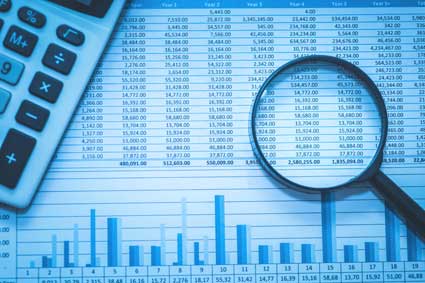Understanding Stocks:
Stocks are shares in a company. When you buy a stock you are buying the company and the fortunes and misfortunes of the company. With common stock, you are buying a vote at the shareholder's meeting. If the company does really well, the stock price will go up and you can sell for more money. If the company does really poorly, the stock price will go down and if you sell it, you'll take a loss. If the company goes bankrupt, the value of your stock will be worthless.
It's like owning a business but without the hassle of managing the business and you only own 1/100th (or 1/1000th or 1/100,000th) of the company. And thus, only that percentage of opportunity and liability.
Preferred stocks are similar, but have one difference. People who buy preferred stocks usually give up their right to vote in the shareholder's meeting in exchange for a stock that pays dividends.
When a company makes money it distributes some of that money to its shareholders. Preferred stock holders are the first in line to receive dividends. If there are any dividends left over, they are distributed to common stock holders.
Not every company issues preferred shares. Some only issue common shares. Not every company gives out dividends (although generally, companies that issue preferred shares do give out dividends).
Stocks are sold in board lots. Although you can buy just one share of a company; that would be generally silly and useless (although there are some very expensive stocks that most people can only afford to own one share of because they cost thousands and thousands of dollars). In general, board lots trade in groups of 100 shares (although different exchanges have their own board lots, depending on the cost of the shares). If you get less than a hundred shares you aren't stuck with them; many people have these (they're called "odd lots") and they can still be bought and sold at the market price.
There are usually two prices associated with stocks: the bid and ask price. A bid is the highest price someone is willing to pay for the stock. (Remember that it's an auction and the bidders are bidding on the price). The ask price is the lowest that a seller is willing to sell the stock for.
Often, you'll hear stockbrokers say something like: "XYZ Widgets. Bidding $75, Asking $80." That's their "short form" way of saying that the buyers want to spend $75 to buy XYZ Widget stock and the sellers want to be paid $80 to sell their shares. Another thing you'll hear is the last price. Often, newspapers will publish Bid/Ask/Last. That's the last price paid for the investment and (thus) at the end of the day, the last price paid for that investment that day.
When you approach your stock broker and ask to buy or sell a stock, if you don't specify what you want done, it is automatically put in as "market order." That means they'll put your request to buy in to meet the asking price or they'll put in your request to sell at the bidding price. That way, you can transact your investment quickly and easily. This is good standard operating procedure.
How to make money with stocks:
Because stocks are an ownership investment, you will only make money if you buy them low and sell them high. What happens to the market in between doesn't really matter as long as the price you sell it at is higher than the price you bought it at.
Everyone wants to know how to make money with a stock and there are so many people that offer "fool proof" ways of knowing which stocks should be bought or sold and when. Unfortunately, many of these so-called gurus are charlatans offer dreams of big dollars that never happen for most people.
Instead, the best choice for investing is with a solid, tried-and-true approach. Especially if you are a new investor, don't try and reinvent the wheel. Approach investing methodically and logically and do your best to make smart decisions carefully, taking in what you've learned here.
How can you separate the good investors from the charlatans?
o Most frequently, the charlatans will have a "fool proof" system.
o They will have enormous claims of financial riches and make benevolent claims that they don't need the money you are paying them, they are just telling you their secret so you can make money too (but you still have to pay $49.95 or whatever).
o They will show you charts and graphs and give specific examples and dollar figures but when their system is applied to other similar situations, it does not work. (Of course, they'll never tell you this, you have to do it on your own).
o They don't deal with the stock market as a whole within the economy nor do they talk to you about your risk.
o Quite often, their system is based on reading charts and graphs. (Reading charts and graphs in itself is not bad but it should be part of a larger system--which we'll talk about shortly).
What do you notice about this course? We are careful not to tell you there's a fool proof system: in fact, there are many ways that people can make money investing. We don't make claims of enormous riches: people make money and lose money investing every single day. A lot of money! We want to make sure you understand that investing can be risky (although you can manage that risk) but good investing can be a lot of work; it's not always easy!
Which stocks should I buy?
There are several ways to know which stocks to buy. This is often the hardest part for inexperienced investors, but it doesn't have to be! In fact, it can be one of the easiest and most fun parts.
The problem is, there are thousands of stocks out there and we feel that we have to do extensive research into each one before we find the right one, but you don't have to.
If you go to a full service broker - which you should consider if you are completely new to investing - they give some recommendations after looking at your portfolio. Of course, this doesn't mean that you can't look around on your own and make suggestions and recommendations to your broker. But it's good to have a professional who knows what they are doing.
Later, as you grow in your experience, you may be able to branch out a little on your own, once you've spent some time in the stock market with a professional. In fact, many people have their "safe money" with their full service broker (safe money being the nest egg they plan on retiring with) and their "play money" with a discount broker where they choose their own investments and trade for fun (of course, play money is the money they can afford to lose). That solution is a great "best practice" but if you want to jump into investing on your own without a full service broker, here are some stock selection ideas:
Find some of the many resources online who can simply tell you what stocks you should buy. Many of those sites already do a lot of research and give good recommendations based on risk level or industry or how it can diversify a portfolio. If you're brand new to investing, don't bother trying to uncover the next great stock. It won't happen!
Instead, look to the pros who can tell you. Let them do the work and you can simply sit back and enjoy the ride. Often, many sites that provide investment advice will give some kind of suggestion, for example: "buy," "hold," "sell" are the most basic suggestions. Sometimes they'll have additional suggestions like "strong buy" and "strong sell." Just by checking those sites a couple times a day, you can let someone else do the work of research and you can reap the benefit.
As you develop your experience in seeing how other people pick stocks, you will soon find that you may want to select your own. Where do you start then?
There! You've just discovered several ways to pick stocks. What makes this way so much better than simply trying to find them on your own is that someone else does all of the legwork (and generally, the person doing the legwork has a lot more experience than you). Their picks may not be perfect but their experience will help them choose wisely, and you can cash in on that.
You COULD go out and simply try to find your own stocks to buy. Some people do. Frankly, for the inexperienced investor, that's not the best course of action.
Once you've built up some experience, though, you will start to get a feel for the types of investments you enjoy. Perhaps you can handle more risk than you first thought. Or, perhaps you become a real expert on a certain industry and can buy and sell stocks in that industry like an expert.
Another great place to start looking at investments to buy is to consider the economic cycles. When the growth phase hits, people have a lot of money and they start buying houses and cars. But those houses and cars didn't magically appear, did they? They were built. But in order to be built, the parts had to be ordered first. Since manufacturers generally don't build more cars until the old inventory starts to die down, they keep a close eye on the inventory and start ordering parts as the inventory diminishes. They've been in business long enough to have a good idea how much inventory needs to be depleted before they have to start making more. When inventories are at their lowest level, the trough phase starts to turn into the growth phase again. So manufacturers are ORDERING parts during the trough phase so they can start building their houses and cars (and other things, like major appliances) to be ready for the growth phase.
Economists have noticed this and created a list of something called "leading indicators" that can hint at what the economy does before the economy does it. Some of these leading indicators include.
o Housing starts (which is when the lumberjacks chop down trees and send them to the lumber mills to be turned into 2x4s and plywood to build a house).
o Manufacturer's new orders (which is when car makers order brake pads and steel from other manufacturers, for example)
o Capital investment (which is when factories buy new machines to help them with the anticipated increase in manufacturing)
o And others.
As well as leading indicators, there are also coincident indicators.
o industrial production
o personal income
o GDP
o retail sales.
Leading indicators move BEFORE the economic cycle and coincident indicators move DURING the economic cycle. So, if you watch the leading indicators closely, you should get a good idea about what is going on in the economy. Then, if you invest in stocks related to the leading indicators as they start to rise and you invest in stocks related to the coincident indicators (because they're low and will rise soon) you'll have a good way of narrowing down the thousands of stocks to just a few stocks. Choose stocks that are related in some way. For example, auto manufacturers, steel producers, lumber mills, and house builders may experience a rise in stock price because they are associated with the leading indicators. Other industries as well as retail stores are associated with the coincident indicators. Of course once the leading indicators get too high, you'll want to sell but still watch them very closely. When they drop, you can expect the coincident indicators to be at or near their height. So you should sell them soon after.
When should I sell?
Buying is fun but you're really only buying so you can eventually sell, right? Ultimately, you want to sell at a higher price than when you bought your stocks at. Sometimes that's easy: something goes up and you sell it. Other times that's harder. Will it go up more? If it drops, will it return to its original price or will it drop further?
That's when some research is good to do. Find out what other people are saying about the stock. If the company who recommended the stock keeps its "buy" policy and you took their recommendation when you first bought it. Consider maintaining your stance and holding the stock. And, if the stock drops more, consider buying more of that stock--it's on sale!
Be very careful when you're looking at what other people are doing for their stock recommendations; be sure to get your recommendations from the same source. One source may suggest that you buy and another may suggest that you sell--all based on different reasons. It's also tempting, if you feel that you want to sell your stock, to look around at someone else's recommendations until you find someone who tells you to sell it. This is another reason why you want to always look to just two or three trusted sources to buy or sell.
If you are concerned about losing your money or you want to "protect your downside" then you can use a "stop loss order." A stop loss order is a trigger that you give the stock broker. You can tell them that you want to sell the stock if it drops to $X (whatever you would want to sell it at). That way, if you buy it at $20 and go away on vacation, and it drops to $5, you won't feel like you lost a lot. If you set a stop loss order to sell at $15.
Success Tips
o Buy and hold is a great strategy: although stock prices fluctuate, they generally go up.
o Find trusted sources and follow them.
o For completely inexperienced investors, enlist the help of a professional.
o For your first investments, and the money you can't afford to lose, choose high quality stocks blue chip stocks that have been around for a long time. They may be more expensive but they will rarely let you down. If you like to play around with higher risk stocks, use only the money you can afford to lose.
o Find stocks - common stocks or preferred stocks - that have a track record of paying dividends. Some companies have been faithfully paying dividends on stocks for decades - or even a century! - on common stock. If they have managed to do that, there's a good chance that you won't lose your money over the long term.

































